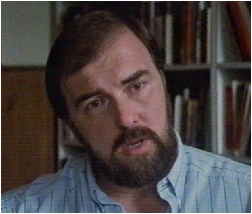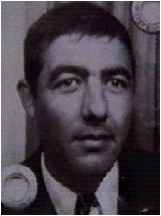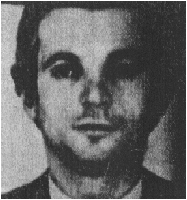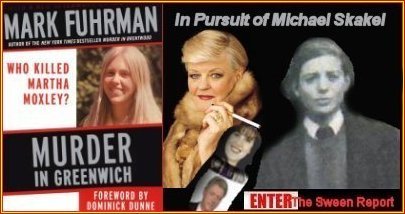|
|
Introduction
The Corsican assassination theory first came to light when the BBC television series The Men Who Killed Kennedy aired in 1988. Produced by Nigel Turner, one episode of the series dealt with one man's search for Kennedy's assassins.
 |
The man in question was Stephen J. Rivele, a California based writer (who is now a successful Hollywood screenwriter). Rivele's research began in 1984. Through his research he came into contact with Christian David, a former member of the Corsican heroin connection and the Latin drug network. Imprisoned at the time in the United States on a charge of drug trafficking, David agreed to give Rivele a certain amount of information regarding what he knew about the assassination, in return for Rivele's help in finding him an attorney. |
Through a series of subsequent prison interviews with David, Steve Rivele slowly learnt more about the contract and how it was to be carried out. David had learned who had accepted the contract at a bar in Argentina, in 1965. When Rivele questioned David on who had accepted the contract, he responded by saying three men had carried out the assassination. Of course, David was very reluctant to give Rivele the names of the three men, on the basis that two of the three men were still alive, and that the Corsican Mafia has a code of silence and vendetta, meaning David would be killed if he revealed the names. He did however give Rivele the first name of one of the men (the deceased one). That man's name was Lucien.
| After much research by Rivele in France and other countries, he finally learned the man in question was Lucien Sarti, a member of the Corsican drug network. Rivele learned that Sarti was a dangerous man who would take enormous risks, and was even despised by his colleagues. However, he was also a highly skilled assassin. Sarti was killed in a police shootout in Mexico City, in 1972. |
 |
Slowly, Rivele learned more about the contract from David. The assassins had been flown from Marseilles to Mexico City. They were then driven to the US border at Brownsville, Texas. They crossed the border using Italian passports, and they were picked up on the American side by a representative of the Chicago Mafia, with whom they conversed in Italian. After being driven to Dallas, they were set up in a safehouse so as to not leave any hotel records. They spent several days photographing Dealey Plaza, and at night they studied the photographs and arranged a mathematical crossfire.
As for the location of the killers during the murder, David was reasonably specific that two of the men had been situated in buildings behind the President’s limousine, although he did not know which buildings. He did, however, specify that one was high and one was low. He stressed that one of the killers was “almost on the horizontal…you cannot understand the wounds unless you understand that one of the men was almost on the horizontal”.
It is reasonable to assume that the two buildings in question were the Texas School Book Depository and the Dal-Tex building. Witnesses saw men on the sixth floor of the Depository and on a lower floor of the Dal-Tex building.
David told Rivele that Lucien Sarti had been situated on the Grassy Knoll. Apparently Sarti had wanted to be located on the bridge above Elm Street, but discovered on the morning of the assassination that the bridge was guarded, forcing him to move onto “the little hill with the wooden fence”. Sarti took up a position behind this fence and fired one shot.
David also specified that Sarti had used an explosive bullet. He said that Sarti was the only one of the three who used that kind of bullet, a remark which he refused to explain. It became apparent to Rivele why he had used an explosive bullet: it is more powerful, causes more damage to the body, and once it makes its impact there are no traces left of it.
David went on to say there were four shots fired:
David also said two
of the shots were fired almost simultaneously. This description of the firing
sequence is consistent with what the majority of witnesses in Dealey Plaza
heard; most claimed to hear 3 or 4 shots. Examining the Zapruder film also
suggests the shots were fired in this order.
In the moment of panic which
followed the assassination, the three were able to get away from Dealey Plaza
and return to the safehouse. David made the specific point that the worst thing
that you can do at a moment like that is to try to escape. And so they stayed in
their safehouse for some ten days until things quietened down sufficiently, and
then they were flown by a private plane from Dallas to Montreal.
David said that the people who met them in Montreal were established contacts who were used to moving people in and out of the country. Finally, from Montreal they returned to Marseilles.
Once Christian David had given Rivele a certain amount of information, Rivele posed to him the obvious problem with his story: David's personal lack of credibility. Rivele asked if there was anyone else alive who could substantiate his story; David thought for a moment, and then instructed Rivele to find a man named Michel Nicoli.
| A former heroin trafficker and member of the same networks David and Sarti had been affiliated with, Nicoli was now a United States federally protected witness and a government informant. His testimony for the American government had led to the imprisonment of many involved in the network. After a search spanning several continents, Rivele almost by accident found the one man in the US government who knew where Nicoli was. This man was Michael Tobin, a high official in the Drug Enforcement Administration (DEA). Consequently, Rivele was able to persuade Tobin to put him in touch with Nicoli. Tobin told Rivele that in his thirty years experience in the DEA, Nicoli was the most reliable witness he had ever dealt with. He had never given the government false or misleading information, and Tobin said if Nicoli stated something, "you could go to the bank on it". |
Nicoli confirmed David's story, except two details, in which case he said he didn't know of them. Rivele was able to establish the last time David and Nicoli had seen each other was in 1972 in Brazil, when both were imprisoned.
On the question of payment, Rivele said:
“Michel agreed with David that the assassins had been paid in heroin. And he went a bit farther. In my first conversation with him, he indicated that although he did not know it at the time, it was he who converted the heroin payment into cash for the assassins. He indicated at least initially, that the three men had appeared at his apartment in Buenos Aires in the months following the assassination with, as he put it, ‘a substantial quantity of heroin’. He was surprised because to his knowledge, it was the first time that any of the three of them had dealt in heroin. But given his reputation for not asking embarrassing questions, he simply agreed to convert the heroin into cash for them.”
Rivele had this to say regarding the origins of the contract:
“My own conviction at this point is that the contract probably originated with Carlos Marcello of New Orleans who placed it in Marseilles through his colleague Santo Trafficante, Jr. who had the closest relations with Antoine Guérini. Beyond that, it seems reasonable that Giancana of Chicago was involved if we accept David and Michel’s idea that the assassins were met at the border by representatives of the Chicago Mafia. And the fact that Sarti’s customers were primarily in New York, and the fact that the assassins evidently moved out of the United States through the Montreal corridor, which was very closely linked to the New York Mafia, also suggests that Gambino may have been involved.”
Rivele questioned Nicoli about this:
Rivele: In your view, why would they go so far to find assassins for such a job?
Nicoli: In my opinion, to obliterate any traces; to fool the government. It’s more difficult to find foreign killers. It’s more difficult, in my view.
Rivele conceded that the Mafia needed assassins who, if caught, could not be tied directly to the American Mafia. Assassins were needed who were not known to American police, and finally, assassins who could be counted on not to talk.
 |
After a certain time, Rivele agreed to hand over all he knew about the assassination to the FBI. Unfortunately the FBI took no apparent action on the material whatsoever. Rivele’s research was dismissed by the public when The Men Who Killed Kennedy aired, due to the fact that the two other men named (Sauveur Pironti and Roger Bocognani) came forward and provided solid alibis. |
 |
This reaction caused the halting of the publication of Rivele’s French book on his investigation, Les Assassins de JF Kennedy. Eventually Rivele gave up on the investigation.
As for Rivele's thoughts on the theory today, here is what he said:
I have not touched the case since 1988; as my old friend Josiah Thompson says: it eats your soul. David was released from prison a few years ago and is alive in France. I assume that Nicoli is still alive. David's letter to his lawyer was obtained (I don't know how) by two researchers (one in Dallas, one in Paris), who promised to make it public last spring, but evidently were frightened out of doing so. They still won't share the contents with me.
I believe that Sarti was involved.
Two points I would add: I saw a documentary TV show last year about the KGB's investigation of the assassination, and was amazed to learn that they came to the same conclusion as me. Second, I was contacted two years ago by a former CIA agent (who worked in the mind control program among others), who told me that I was right about the assassination. Small comfort but better than nothing.

Preliminary Inquiry